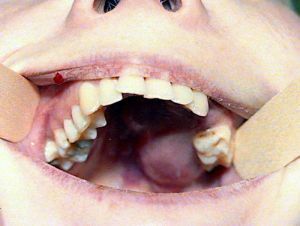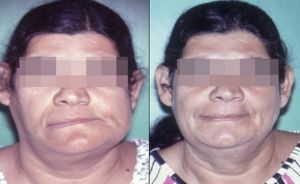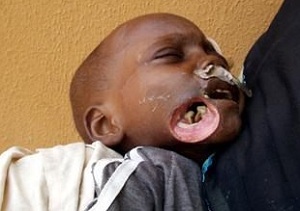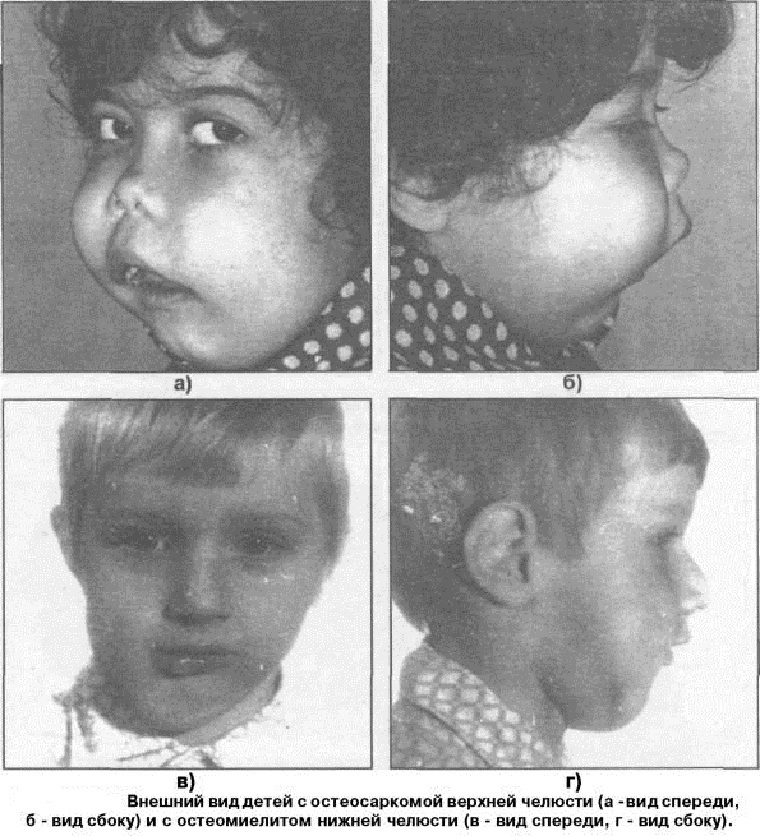 The medical term with the end of "om" means a tumor, and the osteosarcoma( osteogenic sarcoma) of the jaw is not an exception to this rule.
The medical term with the end of "om" means a tumor, and the osteosarcoma( osteogenic sarcoma) of the jaw is not an exception to this rule.
The category of these tumors is such that if they are suspected, they even become pale with all kinds of specialist doctors.
Names so because of the similarities in the section with the pink and white fish meat( "Netscape" means meat), Kaposi any location, the origin of which has from low-grade( as opposed to cancer) tissue behaves very predictably, ie, aggressive.
It is prone to super-fast growth and unrestrained propagation - infiltration( invasion of nearby tissues with rapid destruction).Moreover, the structure and structure of these tissues do not produce any "impression" on sarcoma, and they do not cause "remorse" - the tumor is omnivorous.
Even excised in the most conscientious way and suppressed by powerful ionizing radiation, it arises again - recurs, rapidly metastasizing in the earliest phases of its development.
Given the extremely malignant properties, osteogenic sarcoma is a life-threatening condition, and measures to save the patient require the most severe and decisive.
The development of a tumor on the jaw is a vivid example of sarcoma, as such.
- Content Often - no reason
- Features
- hospital from diagnosis - treatment to
- about consequences and prognosis
- Preventive measures
Often - no reason
Etiology of osteosarcoma of the jaw( tumor growing from her bones) are still certain it is not clear. Most often it appears for no apparent reason.
As for the reasons for the "invisible", it is believed that the explosion of fission poorly differentiated connective tissue( stroma jawbone) must be one of the conditions or their combination in the form: 
- radioactive or other radiation;
- reduction of both local and general immunity;
- inaccuracies in hereditary structures that led to a mutation;
- superstrong effect on the bone to change its properties( categories of fracture or other destructive effects, including suppurative condition and previous benign tumors of the same structures: endohondromu, osteochondritis).
The presence of both general somatic pathology in the patient's body, as well as a low level of his life( and body culture, in particular) is a contributing factor.
Originating in the bowels of one of the jaws of osteosarcoma is particularly active at the stage of intensive growth of bones( age 10 to 20 years in children, especially during puberty), no mercy either to men or women( striking, however, first to 2times more often due to having more risk factors).Individuals who are different for their age are also more likely to get sick.
The development of osteosarcoma on the upper jaw is observed three times more often than on the lower jaw.
Features of the clinic
Because the tumor actively infiltrates neighboring organs, it manifests itself very sharply. When the vessels are squeezed, intense venous vascularization is induced, nerve trunk damage leads to conduction pain along their course, and when a trachea is captured, respiratory distress is initiated.
According to the generally accepted classification, the symptoms of the osteosarcoma of the jaw depend on:
- the stage of the development of the process( with an increase from I to IV);
- tumor form( osteolytic, osteoplastic or mixed);
- degree of malignancy( high, low or medium);
- the nature of the current( localized or metastatic).
 Tumor localization is important( it is either central or peripheral).
Tumor localization is important( it is either central or peripheral).
primary point of pain in osteosarcoma can be calculated as the days and years( hence the belated recourse to physicians and their powerlessness to help).With mandibular localization, they occur earlier, accompanied by irradiation into closely located teeth. His sarcoma usually debilitates night pains of noisy character.
Further dental pains increase, gingivitis of the gums is observed, often accompanied by itching in it, teeth are loosened, problems arise when jaws are closed while chewing food. The effect of using analgesics is lost.
Demonstration is the deformation of the face due to its edema, accompanied by either exacerbation of pain sensitivity and significant tightening of the involved tissues, or its loss( in the version with a chin they speak of the Vincent syndrome).
Temperature jumps in the case of osteosarcoma are also quite typical. If in the initial stages of development its rise happens rarely or not at all, then as the intoxication increases and the body's defense weakens, there will be fluctuations from subfebrile indicators that last for several days to normal. When the tumor disintegrates, the digits reach 40⁰C, remaining at this level for a considerable time( especially when tissues become infected due to weakened immunity).
Of the general symptoms that indicate osteosarcoma, there is progressive weakness with lethargy and sweating, decreased performance, irritability, signs of weakness of immunity and damage to the lymphatic system( lymphadenitis).
Local signs of central osteosarcoma are the signs of involvement in the structure of neighboring regions: in the transition to the sinuses of the nose, this is a difficult nasal breathing, the prickly discharge from the nose, while spreading to the orbit - exophthalmos.
In case of alveolar localization of the tumor, weakness of the jaw structures, easily damaged in the process of eating, with the appearance of cracks and ulcers on the mucosa as a result of secondary infection is observed. In this case, the deformation of the face can occur even in the initial phase of the disease.

Later, tumor formation manifests itself as a periostitis of the jaw, hyperplasia of the bone tissue, loss of teeth, a disorder of the speech function.
From diagnostics to treatment
Despite the many diagnostic techniques and methods( starting with the physical and finishing with the most modern ones produced in scientific laboratories), recognition of the jaw osteosarcoma is not an easy task, and in the early stages it is almost impossible due to the absence of the patient, which the patient is not in a hurry to become.
At a primary examination, this "late" patient has symptoms that can indicate a variety of diseases( and not only dental): hyperthermia, lymphadenitis and others. 
And only onkostorozhennost the dentist seeing the patient with pronounced pains due to the rapidly growing jaw tumor, leads to the decision of immediate carrying out of express diagnostics, including:
- research on oncomarkers( histocytology and cytochemistry of blood and tissues);
- X-ray examination, CT, MRI, Doppler angiography, ultrasound.
But even the method of tissue biopsy and osteoscintigraphy( examination of bone tissue using radioactive technetium 99Tc) is not able to give an accurate affirmative answer to the question of the nature of the tumor.
There is no comprehensive method for treating the osteogenic sarcoma of the jaw at this time. For the excessively hard impact on the former focus by ionizing radiation after radical surgical excision of the tumor is also capable of initiating tissue degeneration, as well as surgical trauma( in accordance with the etiological theory of the origin of this pathology).

Leucovorin neutralizes the aggressive effects of methotrexate
Due to the high resistance of the re-birth cells to both irradiation and chemotherapeutic drugs, the chemotherapy method should also not be considered encouraging.
Methotrexate in combination with leucovorin, doxirubicin, ifosfamide, epotoside, adriablastin, cisplatinum and carboplatin, used as chemotherapeutics to suppress the metabolism of the surviving atypical cells, delicately affect the condition of an already suffering organism, causing digestive and menstrual disorders, alopecia, leading toto the appearance of ulcers and other.
In the process of combined treatment and after it, special attention should be given to the diagnosis of the presence of tumor metastases, which are most often detected in the lungs.
On the effects and prognosis of
Because of early onset of metastatic activity, a tendency to relapse, resistance to most methods of radiation and chemotherapy, and frequent complications of the disease in the form of sepsis, death occurs in a large percentage of cases. IV stage of sarcoma involves a figure of 5-year survival at a level of no more than 20%.
Factors favorable to the forecast include:
- age not more than 50 years;
- low tumor malignancy;
- minor dimensions of the neoplasm;
- complete absence of metastases.
Preventative measures
Prevention includes measures to protect the body from radioactive emissions in both military and peacetime, body culture, regular treatment of available somatic diseases and methodical( at least twice a year) oral examination by a dentist.
